I have particularly fond memories of Horned Larks from growing up on our northwestern Montana family farm near Cut Bank, Montana. The fallow barley fields and adjacent short grass prairies abounded with them. But since I began photographing birds I’ve had very few opportunities with them here in Utah – until last week when had a grand time with multiple cooperative larks in the foothills of the Stansbury Mountains. And yes, the wind was blowing briskly – a perfect situation to remind me of those Montana larks!
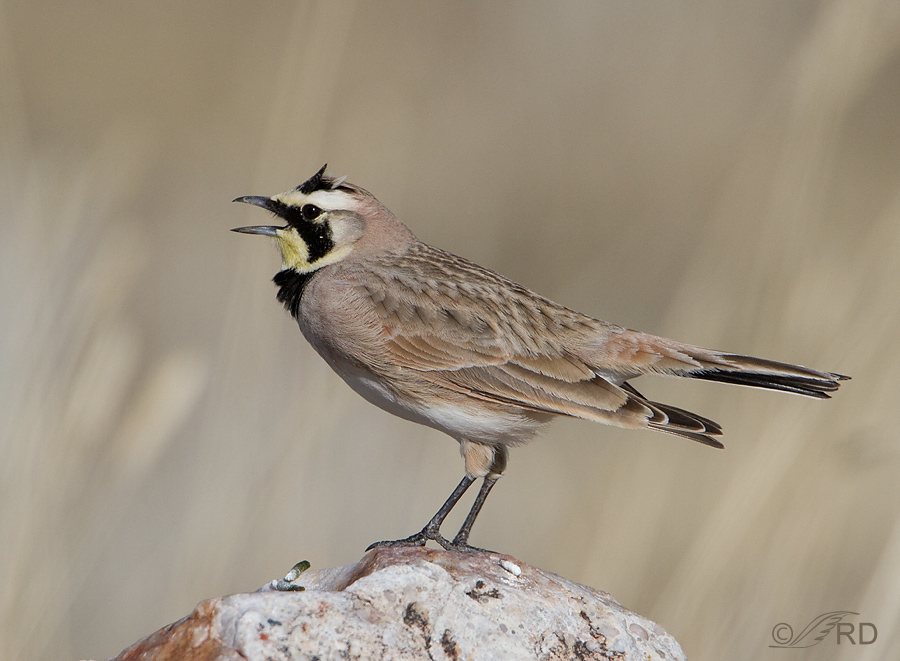
Singing in the wind
The wind seemed to inspire the males to sing as they all seemed to be singing up a storm on this day, despite the early February date.
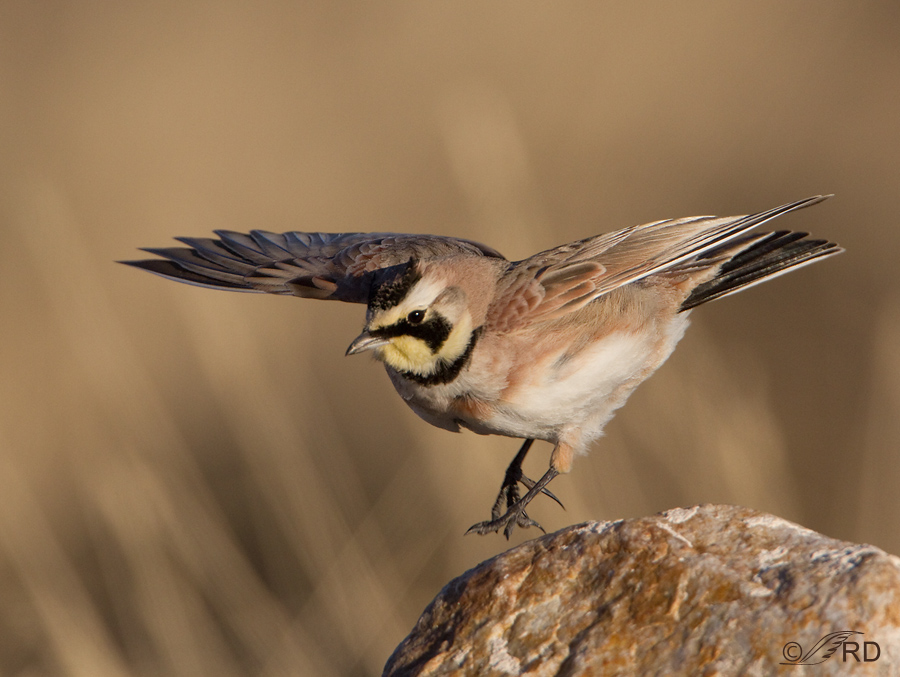
Blown off the perch
While it may look like this male is taking flight, in reality it was being blown off the perch by a sudden gust of wind. If it had been taking off, both wings would be extended.
Wind- disheveled feathers
In this photo, the wind updraft from the rock perch blew a perfect semicircle of his upper chest feathers into his black neck ring, making him look pretty silly.
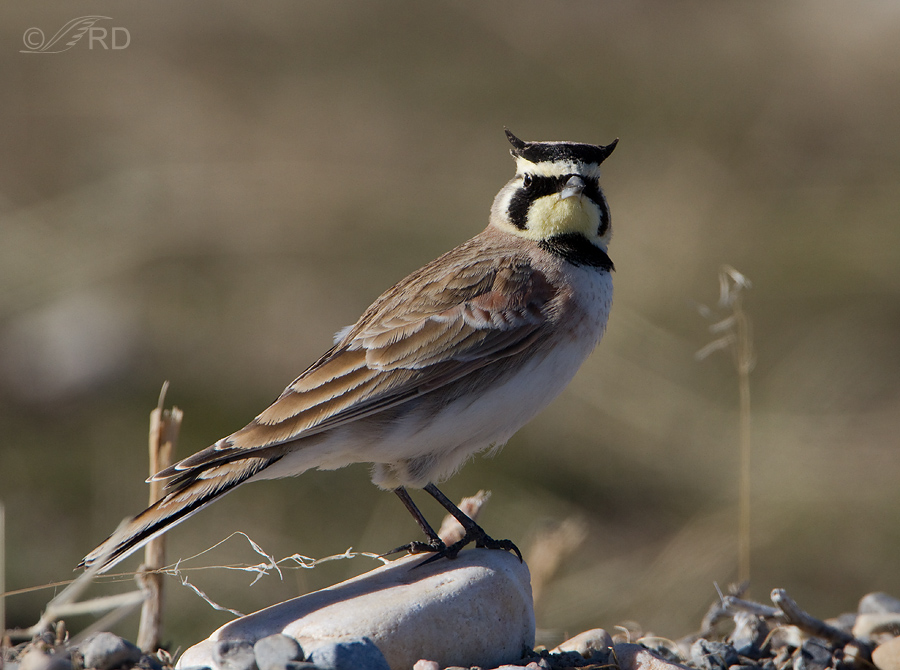
Very obvious “horns”
This photo shows the “horns” (occipital feather tufts) that are characteristic of the species. The horns are found on both sexes but they are much less obvious in the female and rarely erected. This frontal view of the head shows the horns most distinctly when they are raised.
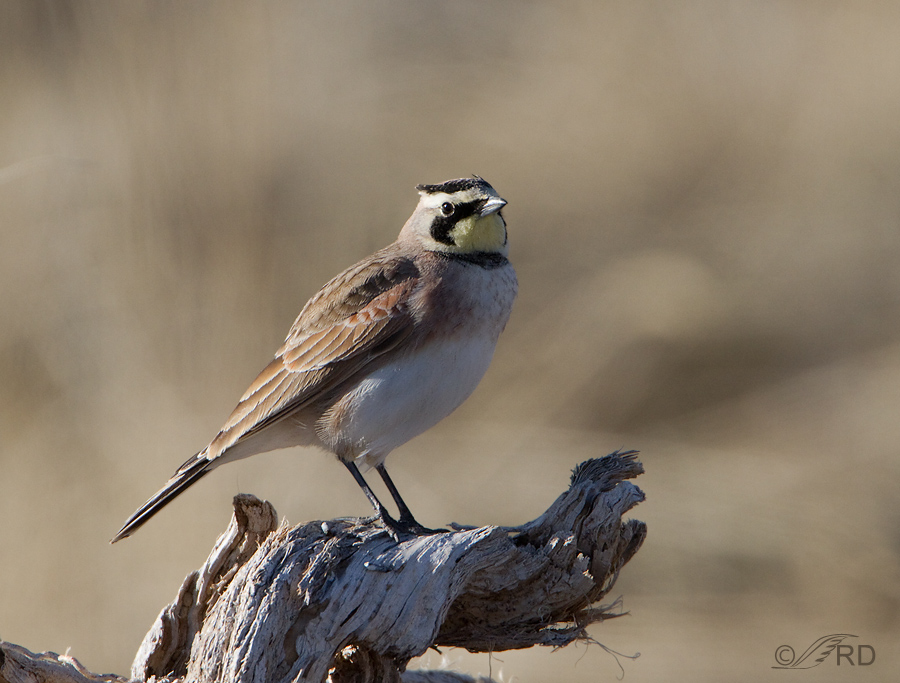
Horns laying almost flat
At times the horns are laid flat against the head and are almost unnoticeable. Here they are in an intermediate position.
Female Horned Lark
This is the female. The horns are not as prominent as those of the male and are rarely erected. Also note that the females colors are less vivid with a smaller cheek patch and breast band.
Sentinel on a rock
I’ve made an anecdotal observation about Horned Larks that seems slightly unusual, but fortunate for me as a bird photographer. In my experience, most ground birds will scurry away for cover on the ground, or fly off, when they feel threatened or approached. These larks seem to go about their seed gathering business on the ground until I get too close (always in my pickup truck) but when I’ve pushed a little too far they always seem to look for a rock, very low bush or dirt clump to perch on and observe me. Then they will fly off I’m too close. But what a nice arrangement for the photographer – that the bird seeks out a slightly elevated perch as you approach!
Male singing on a dirt clump
One more male singing. They have a very pleasant song, soft and sweet. I can hear it now, along with the wind…
Ron


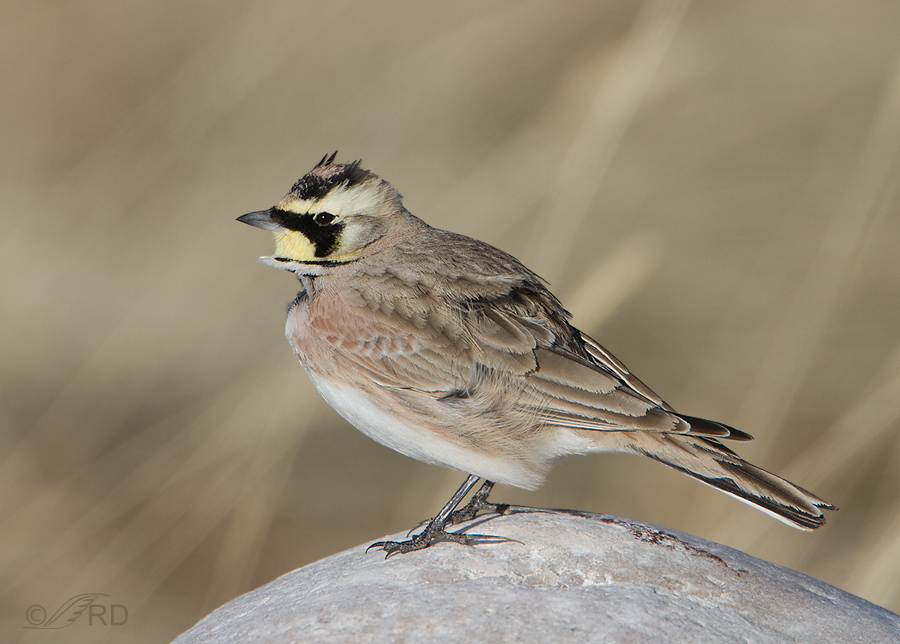
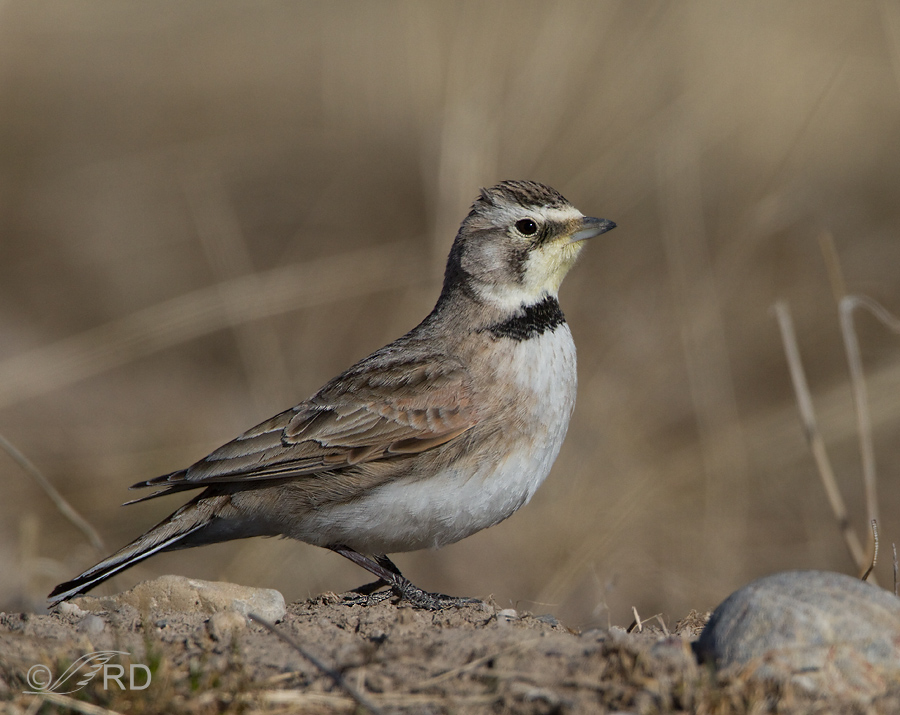
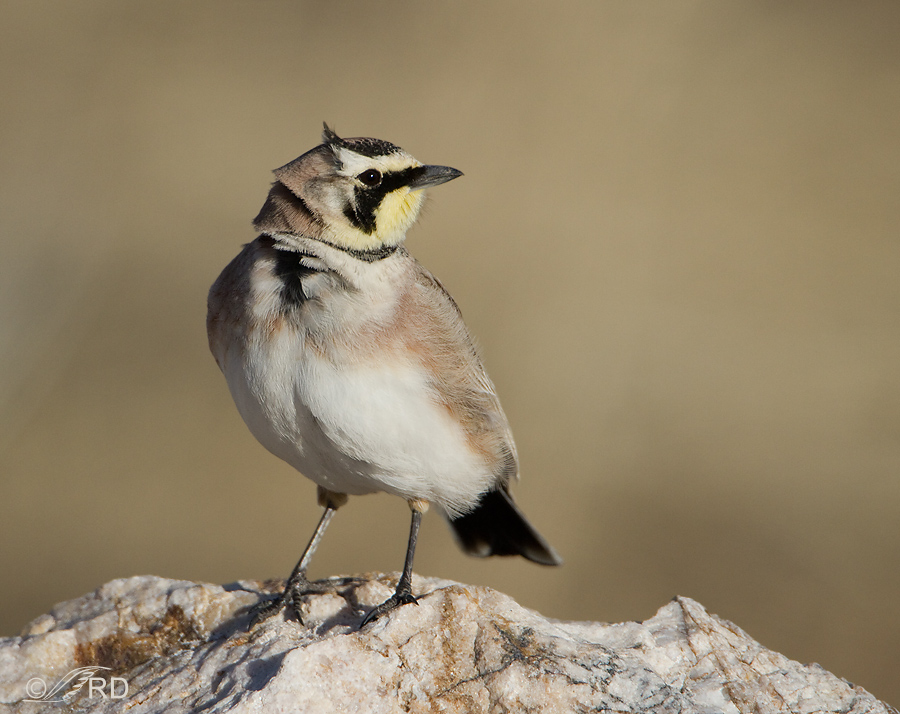
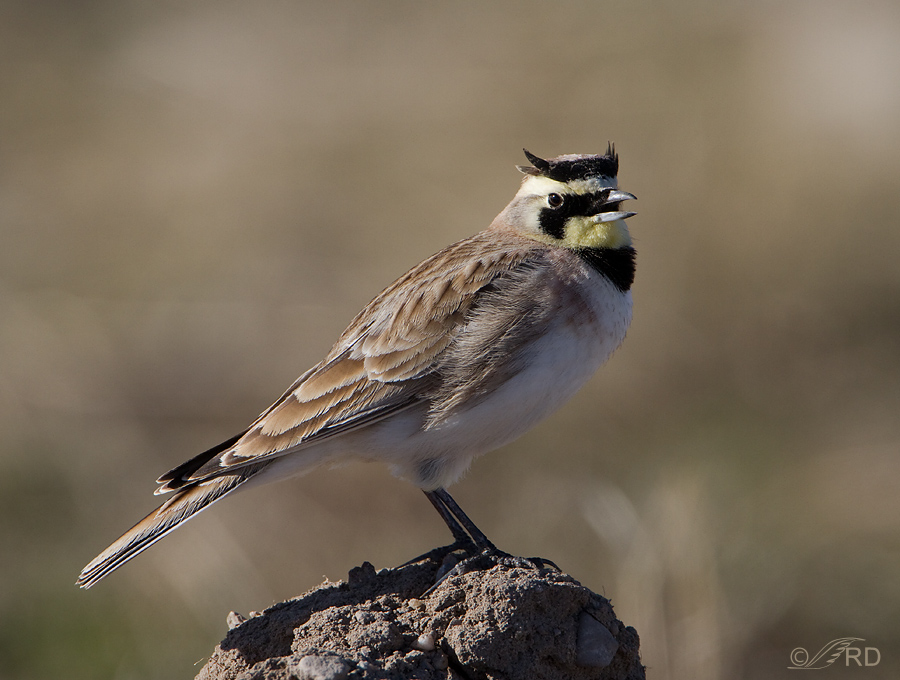
Very nice images Ron. I can see the affection you have for these birds; this is a wonderful series of photos.
The quality of your images is stunning. There is a lot to learn from you.
Andreas
They sure are handsome birds Ron!